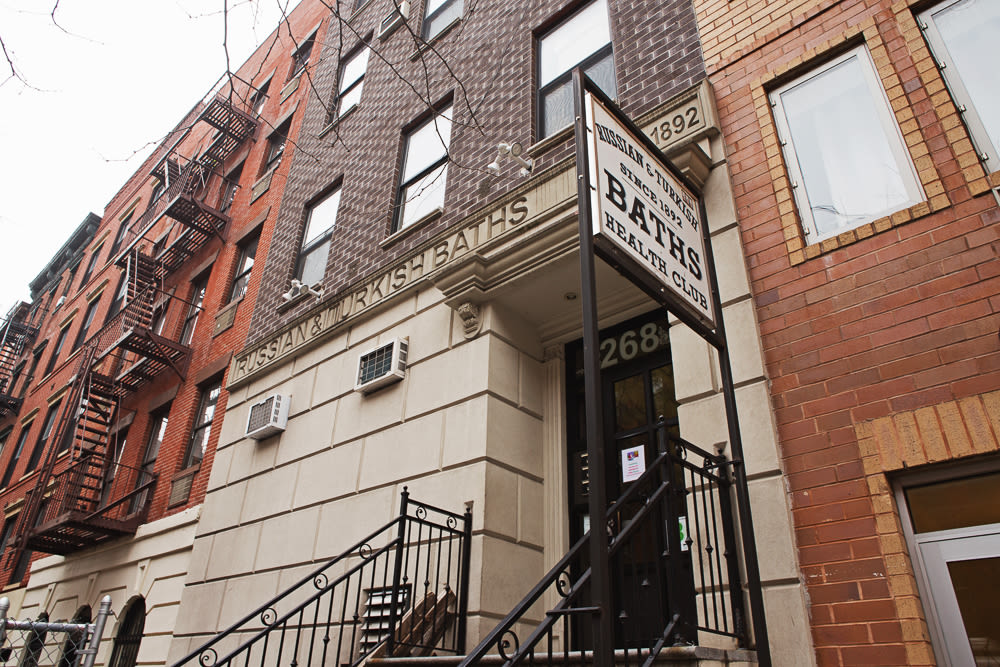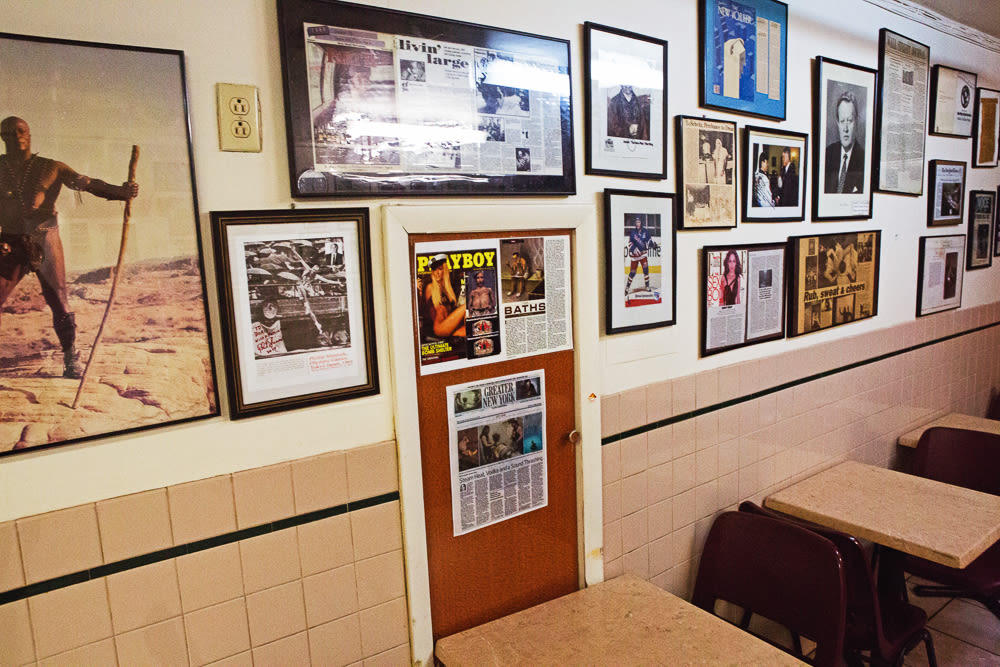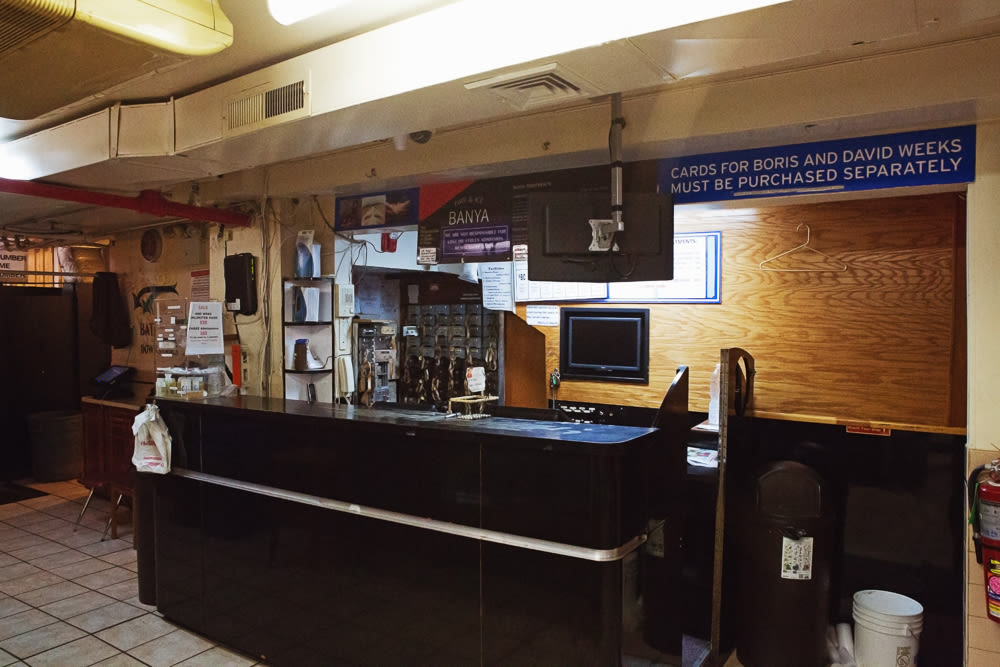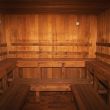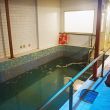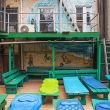I’m a seasonal Russophile. Winter rolls around and my mind inevitably turns to Doctor Zhivago and sable-coated fantasies of moving to Brighton Beach. I’ve even gone so far as to join a weekly Russian language and culture course, because the restaurant that runs it boasts a library of infused vodkas and a dining room that looks like a Soviet granny’s parlor. Thus far, I only know how to say “thank you' (it’s spasibo).
It was in this class that I learned about Bannik, the spirit of the bathhouse in Slavic mythology. Russians of old believed that it was important to behave properly when visiting a banya or else you might insult Bannik, who made his home in the sauna oven. Bathers would give him offerings—loaves of salted bread or a slaughtered chicken to be buried beneath the threshold. Bannik could also predict your future—for a reading, you just had to stick your naked rear-end into the banya late at night and wait to see what Bannik would do with it. If he gently patted your cheeks, you would have good luck, but a swipe with his claws meant you were in for a rough year.
This prior knowledge meant that I wasn’t just expecting a weird time at the Russian & Turkish Baths in New York’s East Village; I was hoping for one. And I was not disappointed.
The Baths, once referred to as the The Tenth Street Baths, have been around since 1892. Judging from archival photographs, there was a time when they were clothing optional and men-only. Today, the baths are co-ed except for Wednesday mornings when they are women-only, and Sunday mornings, when they are reserved for men. I visited on a sunny Sunday afternoon in October with my sister, also a first-time banya-goer. Bathing suits in tow, we paid the $35 admission fee and were given black cotton robes, towels, and plastic sandals. We changed and made our way downstairs to get our schvitz on. (Schvitz is the Yiddish word for “sweat.”)
In Russia, banyas are considered liminal spaces, caught between worlds. This is in part due to the extreme atmospheres they offer—they are cold, wet, hot, and dry all at once. Historically, they were also where babies were born, owing to their abundance of fresh water, hygienic surfaces, and radiant heat. In short, they were magical. On first impression, the Russian & Turkish Baths seemed both magical and a little scary—a shadowy, windowless place that also felt venerable and bygone, like the best of the city’s old subway platforms. Sweaty patrons slipped in and out of mystery rooms. Almost immediately, a large man with a towel draped over his head asked us in heavily accented English if we wanted a massage. He stood next to a plastic garbage can filled with suds and leafy brooms. “Maybe later.” we told him—best to get the lay of the land first.
After a rinse in the showers, we went exploring. We started with the dry Redwood sauna, which was a pleasant place to warm up, even for a dry sauna-phobe like myself (the really hot ones make me anxious). Next came the steamy Turkish Room, which opened our pores and officially commenced the day’s schvitzing. The baths were relatively quiet, and most of the patrons seemed like old hands at the banya game. We watched them carefully; a Russian model-type in complicated underwear liberally doused the radiators with eucalyptus oil she carried with her from room to room. A linebacker-sized man put his towel-covered head between his knees and breathed deeply in the Aromatherapy Room. A mother-daughter pair took turns scrubbing each other’s backs with a mitt on a tiled bench. Not one of these bathers uttered so much as a peep as they waded into the 46° F pool; while we approached it like two weirdos, hugging our chests and gnashing our teeth the deeper we plunged into the frigid waters.
But the Russian Room, mythical Bannik’s headquarters, was the real test of fortitude. Heated to over 200° F, this is the closest you’ll ever get to feeling like mound of baking dough. We went in while a platza treatment was in progress: a woman lay on the top bench with a towel over her face while a burly masseuse whacked her with a broom of oak leaves (called a venik) and tossed buckets of cool water across her body.
'You’ve gotta do that.” my sister whispered.
But the heat had already gotten the best of me. Too faint to reply, I wobbled out of the Russian Room and up to the restaurant to buy a much-needed bottle of water. I recovered in the dining area, surrounded by walls of framed, signed celebrity headshots from the '80s. A group of half-naked old men shared pickled radishes at a table next to me.
This, I decided, was one of the best places I’d ever visited in New York. My hands might be shaking; my head, light and spinning, but I wanted more.
Back downstairs, I found myself once again face-to-face with the masseuse. “Massage.” he offered. I asked if it would be possible to get the platza treatment in one of the massage rooms rather than in the Russian furnace. He agreed, and I waved goodbye to my sister, heart pounding in my chest.
I have hazy memories of what happened next. In the metal stall, I was directed by Victor (the masseuse) to lie on the table. He began hosing down my back with super hot water and hitting me with the soapy leaves, while murmuring “Nice, nice, nice.” Whenever it started to feel like it was too much to bear, the heat would ease off and I’d be able to breathe again. After the platza, he stretched my limbs at impossible angles, then used his arm and what felt like all of his body weight to re-align my back, knocking the air right out of my lungs. Though I felt like I was going to die throughout most of treatment, once it was over, I felt really, really alive. I tried asking Victor about Bannik, but he either wasn’t in the mood for conversation or had no idea what I was talking about. Instead, he smeared a mud mask on my face and told me to go upstairs and let it dry in the sun.
My sister got a mask too, and we spent the remainder of the afternoon basking on patio pool floats (their deck chair alternatives), giddy from the experience. Nearby, patrons drunker than us debated CIA conspiracy theories and causes of the pending apocalypse. We planned our next visit.
In a neighborhood like the Village, often torn between old and new, it’s nice to know a friendly spirit is looking out for the Russian & Turkish Baths. So spasibo, Bannik—to your health and a hundred more years of sweat in the city.
—Lauren Maas
Photographed by Tom Newton.
